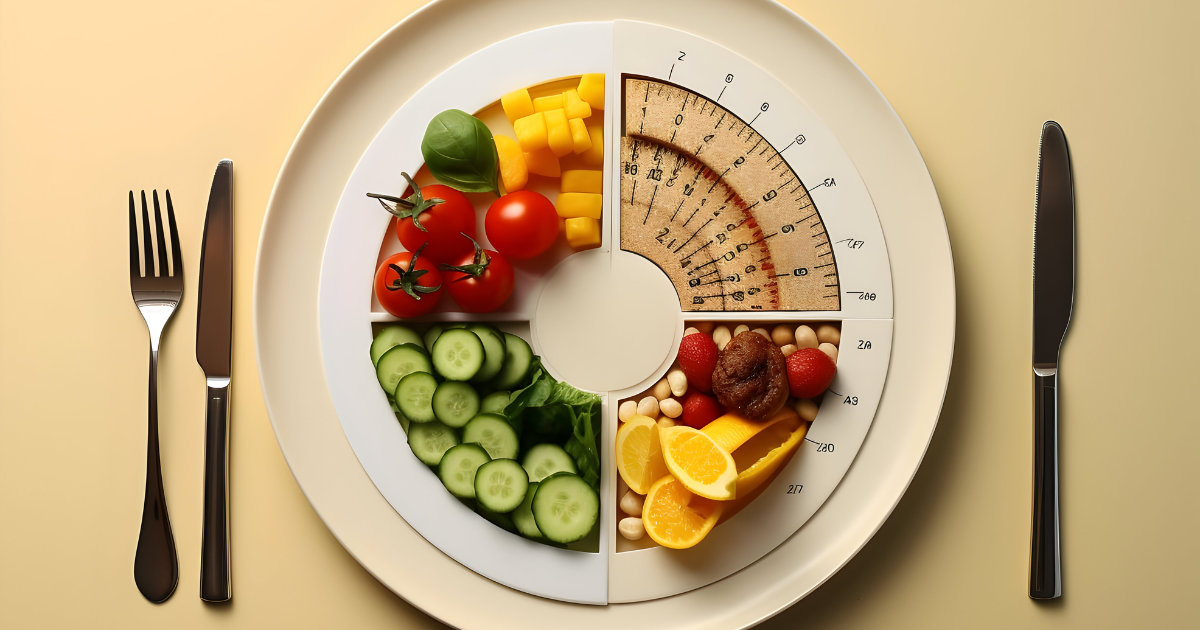In a culture where food equals love and celebrations revolve around plates piled high, mastering portion control can be a game-changer for your heart. Heart disease is rising rapidly in India, and while awareness about "what" to eat is growing, "how much" we eat often goes unnoticed. This blog aims to simplify the concept of portion control, especially in the Indian dietary context and show how it contributes to long-term heart health.
What Is Portion Control and Why Does It Matter?
Portion control refers to regulating the amount of food you eat in one sitting. Unlike calorie counting, which can be complicated, portion control helps you tune into your body's hunger cues while maintaining nutritional balance.
Why It's Critical for Heart Health:
- Helps manage cholesterol and triglyceride levels
- Reduces risk of obesity, a major risk factor for heart problems
- Prevents overeating of sodium, sugar, and unhealthy fats
- Supports better blood pressure control
- Improves blood sugar stability, reducing stress on your heart
Learn more about Best Foods for a Healthy Heart.
Indian Eating Habits: Where Do We Go Wrong?
Traditional Indian diets are often healthy, but portion sizes tend to be large and carb-heavy. Common habits that challenge portion control include:
Problem Areas:
- Multiple servings of rice or roti
- Overeating during weddings, festivals, and social meals
- Using large plates or thalis that encourage more intake
- Emotional eating or bingeing during stress
- "Clean plate" culture instilled from childhood
How to Estimate Right-Sized Portions
You don’t need a weighing scale at every meal. Simple visual cues help.
Smart Estimations:
- Chapati: 1 medium = size of your palm
- Rice: ½ cup cooked = size of a small bowl
- Vegetables: 1 cup = size of a closed fist
- Protein (dal/paneer/fish): 1 palm-sized portion
- Oil: 1 tsp = size of your thumb tip
This kind of intuitive eating can naturally reduce daily calorie intake.
Heart-Smart Indian Thali: Balanced and Controlled
Design your plate to cover all food groups in controlled amounts.
Sample Heart-Healthy Thali:
- 1 medium roti or ½ cup brown rice
- 1 cup cooked seasonal vegetables
- 1 bowl low-fat dal or grilled paneer
- Salad (no dressing or salt)
- 1 cup low-fat curd or buttermilk
- Fruit instead of dessert (like papaya or apple slices)
Explore our blog on Heart Foods: Cooking Tips for Indian Kitchens for practical cooking tips.
Avoiding Overeating: Tips That Actually Work
Mindful eating and preparation techniques make portion control easier.
Strategies:
- Use smaller plates and bowls
- Serve food in the kitchen—not at the table
- Avoid distractions like mobile or TV while eating
- Eat slowly and chew thoroughly
- Don’t skip meals, especially breakfast
- Plan and pre-portion snacks in advance
Portion Control While Eating Out or Ordering In
Restaurant portions are often double what you need. Smart choices matter.
Eating Out Tips:
- Ask for half portions or share a dish
- Skip high-carb side dishes like naan or pulao
- Choose tandoori or grilled items over fried
- Eat a bowl of soup or salad first
- Box leftovers immediately when served
Snack Smarter: Heart-Healthy Options
Frequent snacking can sabotage portion control. But smart swaps help.
Snack Ideas:
- Roasted chana or makhana (1 small katori)
- Unsalted nuts (a small handful)
- Boiled egg or paneer cubes
- Fresh fruit slices with a dash of chaat masala
- Buttermilk or coconut water instead of sugary drinks
Portion Control in Diabetic or Hypertensive Patients
People with co-existing health conditions must be even more mindful.
Adjustments:
- Limit starchy carbs (like potatoes, white rice)
- Choose low-sodium options, especially packaged snacks
- Ensure lean protein in every meal
- Include fiber-rich foods to stay full longer
- Avoid fruit juices—eat whole fruits instead
Portion Control During Festivals and Special Days
Sweets, fried snacks, and multiple meals are festival staples. But you don’t have to skip them entirely.
Festive Tips:
- Taste everything—finish nothing
- Eat slowly and enjoy flavors
- Compensate with a light dinner or walk post-meal
- Make heart-friendly versions of festive treats (baked modaks, jaggery-based sweets)
- Stay hydrated to reduce cravings
Frequently Asked Questions About Portion Control
Can I eat rice if I want to control portions?
Yes—limit to ½ cup cooked rice per meal, preferably brown or hand-pounded.
Is eating more vegetables always healthy?
Yes, but avoid deep-fried or over-salted versions.
Can I eat sweets in small portions?
Occasionally. Limit to a bite-sized piece and opt for jaggery-based sweets.
What about cheat meals?
One controlled cheat meal per week is okay—but don’t binge.
How often should I eat?
Every 3–4 hours. This prevents overeating later in the day.
Final Thoughts: Little Changes, Big Impact
Portion control is not about deprivation—it’s about awareness. In the Indian context, where food is culture and celebration, learning how much to eat is as important as what you eat.
By being mindful of portions, you not only support your heart health but also improve digestion, energy levels, and emotional well-being. Small changes in your kitchen and your plate can protect your heart for years to come.
Authoritative External References:



